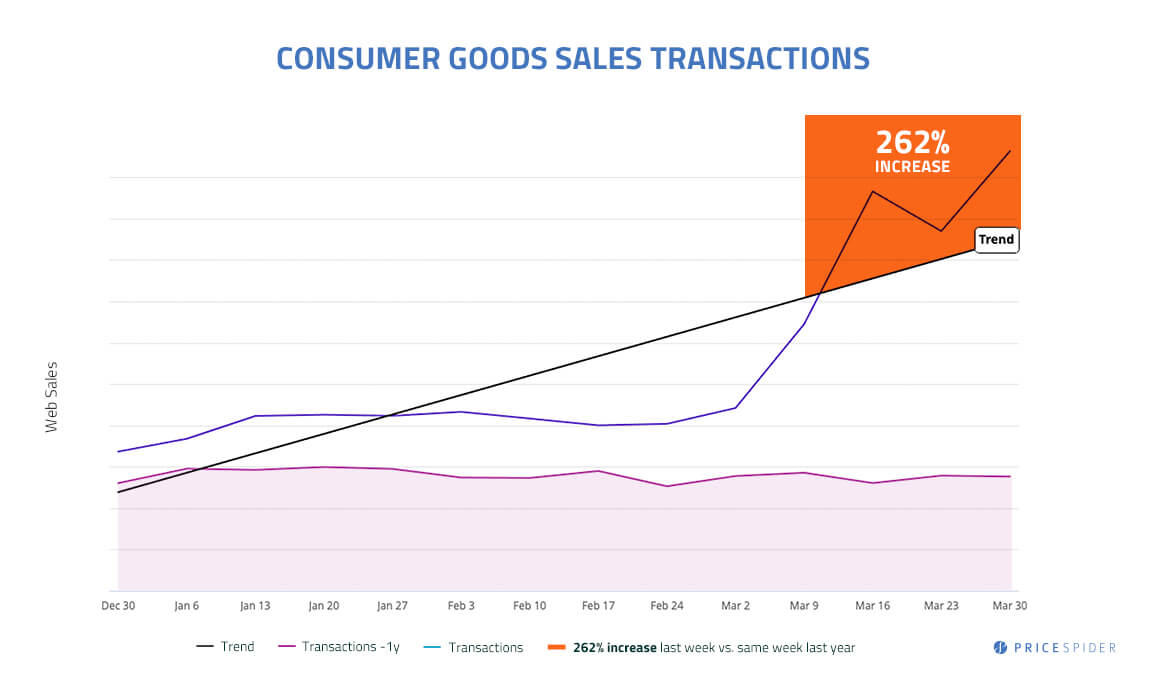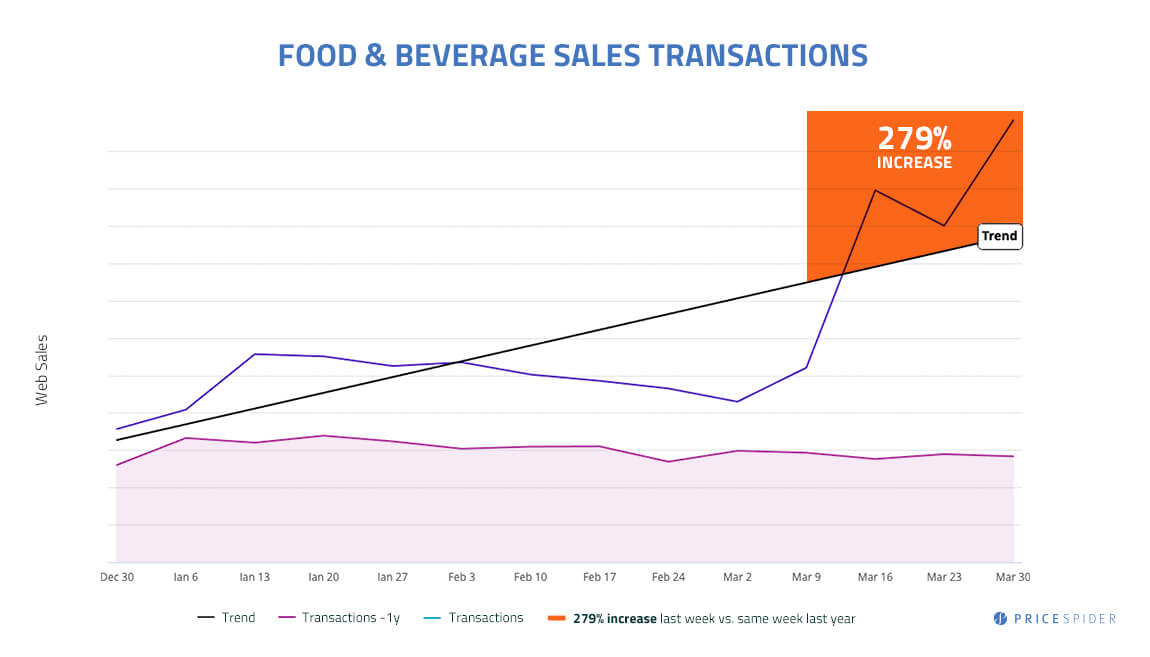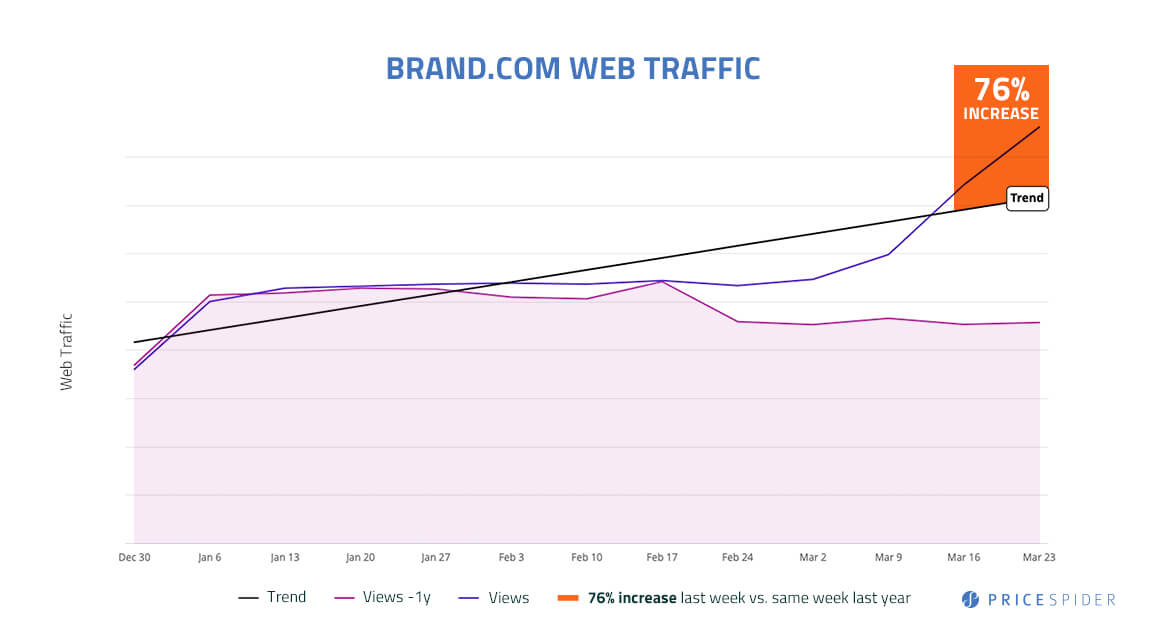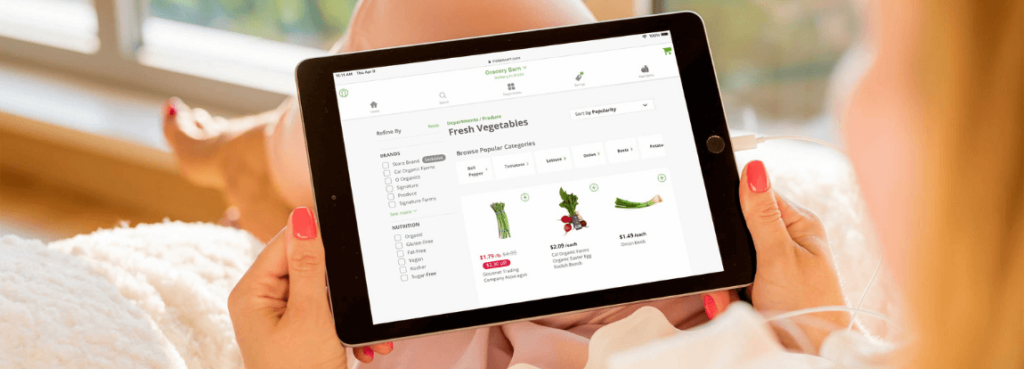It’s no secret that ecommerce has seen a huge uptick in the wake of COVID-19. Stores are closed, and being in public is discouraged, so people are naturally going to shop online. When you compare ecommerce CPG sales from March 9–30 2019 to the same range in 2020, our data shows a 262 percent increase in online transactions.

But no industry has seen as much change during this time as food and beverage. When the coronavirus began disrupting life in the US, online food and beverage sales increased by 279 percent!

It would be easy to dismiss this data as an anomaly. Obviously things are going to be different during a crisis, and ecommerce just happens to be well-suited to weather this storm. But while crises are temporary, they often cause sharp changes in behavior, and some of those changes last.
And there’s good reason to believe that food and beverage ecommerce will never be the same again. Here’s why.
Consumers are learning to trust food and beverage brands
Before the coronavirus, one of the biggest reasons people weren’t buying food online was because they wanted to physically inspect their groceries before purchasing. But now people are trying to be in public as little as possible, and with supply struggling to keep up with demand, physically selecting your groceries is both less appealing and less productive, because there’s simply not as much available.
Right now, people just want to make sure there’s food on the table—however it gets there. So they’re more willing to experiment with buying groceries online.
If people feel like online groceries are too expensive or too low quality, they’re not going to continue when the alternative (buying in store) becomes more appealing again. But the brands that create an ideal online shopping experience and deliver quality groceries are going to earn long-term business. Because when it comes down to it, the biggest reason consumers have been wary of buying produce and perishable food online is that they haven’t tried it. Without any past experience to draw from, they’ve had no reason to trust online food and beverage brands. Until now.
People are seeing the convenience of online grocery shopping
Once you learn a better way to do something, it’s hard to return to a process that takes more time, energy, or money. Before the COVID-19 pandemic, the vast majority of people said they never buy groceries online. And while there are plenty of reasons why consumers avoided it, the truth is most people had never experienced the greatest benefit of getting groceries online: convenience.
For people with transportation issues, health conditions, small children, or unusual schedules, shopping in brick-and-mortar stores has always been inconvenient. Now that buying groceries online is being normalized, some people are going to continue enjoying the ability to stock their pantry at any time without leaving their home.
Americans are depending on brands to find items in stock
The other thing that’s happening right now is that brick-and-mortar stores are struggling to keep up with demand. This has been most true for household goods and food and beverage products, and our data reflects the impact this has had on the ecommerce side as well. We’ve seen massive spikes in transactions and views as states announced closures and stay-at-home orders, and as the national conversation around COVID-19 has evolved. As people looked for supplies they flocked to individual brand sites, indicating that consumers are using brands’ Where to Buy buttons to find products in stock. The graph below shows all platform traffic to brand.com during the first three weeks of March 2020 (which includes categories that are down year over year), but still peaking at 76% higher as the same time period last year.

More than ever before, people are including brands in the shopping experience. Why physically move from store to store—or even bounce between retailers’ websites—when you can just check with the brand to see who has what you want?
This is creating valuable opportunities for brands to show what they can add to the shopping experience. Perhaps you have unique value propositions that make buying directly from you more appealing. Or you can simply highlight the best prices and availability, leading consumers to look to you first instead of their preferred retailer.
Streamline the path to purchase
Installing Where to Buy on your site transforms every product page into a shopping hub your customers won’t find anywhere else. They can compare pricing, availability, and product configurations without leaving your site, so they can get your products in the ways they want.
Where to Buy also allows you to provide buying options at every interaction you have with a potential customer, ensuring they have the most efficient buying experience.
This is the ideal path to purchase for online shoppers. Want to see how it works?

